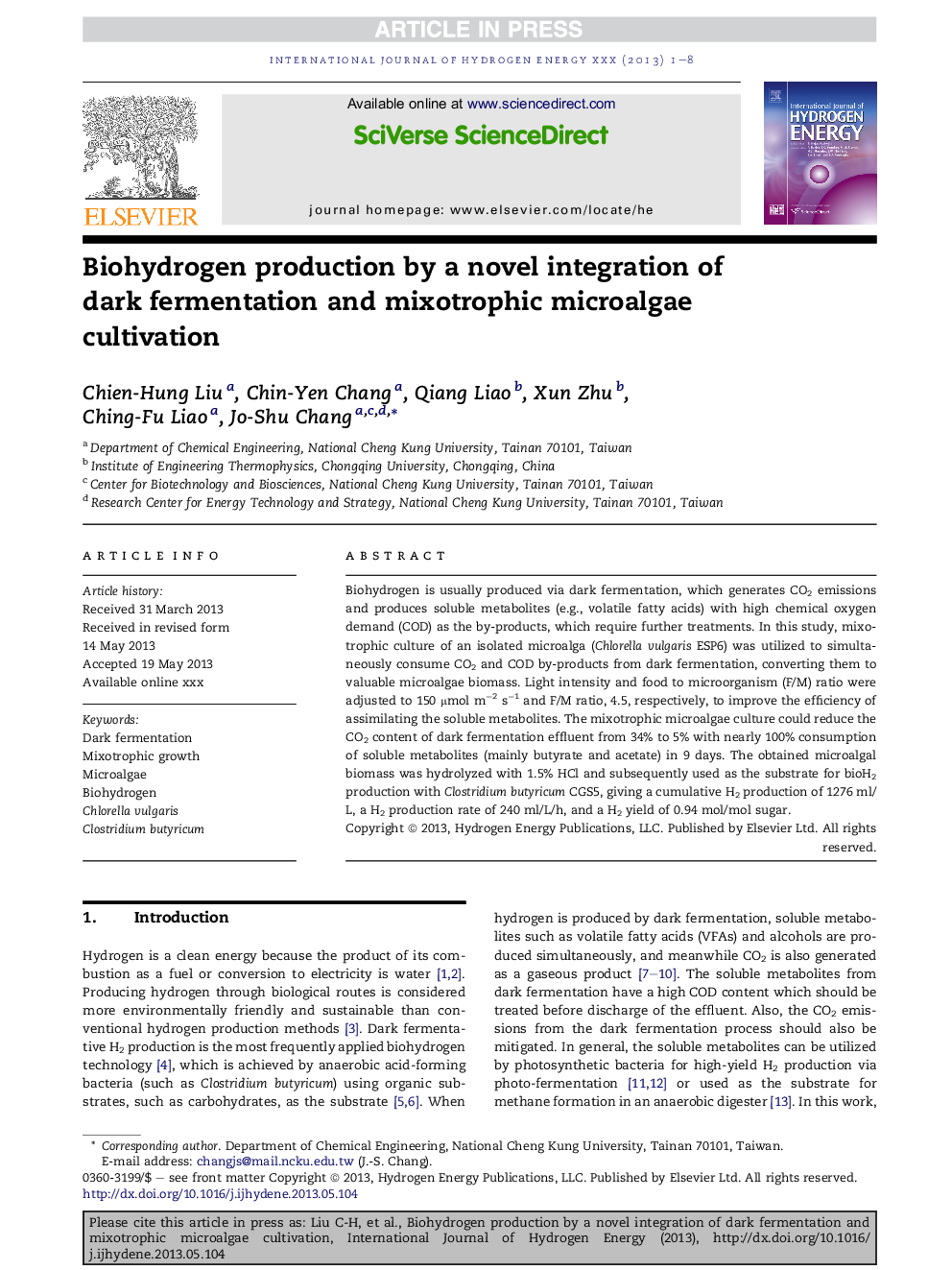| Article ID | Journal | Published Year | Pages | File Type |
|---|---|---|---|---|
| 7721770 | International Journal of Hydrogen Energy | 2013 | 8 Pages |
Abstract
Biohydrogen is usually produced via dark fermentation, which generates CO2 emissions and produces soluble metabolites (e.g., volatile fatty acids) with high chemical oxygen demand (COD) as the by-products, which require further treatments. In this study, mixotrophic culture of an isolated microalga (Chlorella vulgaris ESP6) was utilized to simultaneously consume CO2 and COD by-products from dark fermentation, converting them to valuable microalgae biomass. Light intensity and food to microorganism (F/M) ratio were adjusted to 150 μmol mâ2 sâ1 and F/M ratio, 4.5, respectively, to improve the efficiency of assimilating the soluble metabolites. The mixotrophic microalgae culture could reduce the CO2 content of dark fermentation effluent from 34% to 5% with nearly 100% consumption of soluble metabolites (mainly butyrate and acetate) in 9 days. The obtained microalgal biomass was hydrolyzed with 1.5% HCl and subsequently used as the substrate for bioH2 production with Clostridium butyricum CGS5, giving a cumulative H2 production of 1276 ml/L, a H2 production rate of 240 ml/L/h, and a H2 yield of 0.94 mol/mol sugar.
Keywords
Related Topics
Physical Sciences and Engineering
Chemistry
Electrochemistry
Authors
Chien-Hung Liu, Chin-Yen Chang, Qiang Liao, Xun Zhu, Ching-Fu Liao, Jo-Shu Chang,
